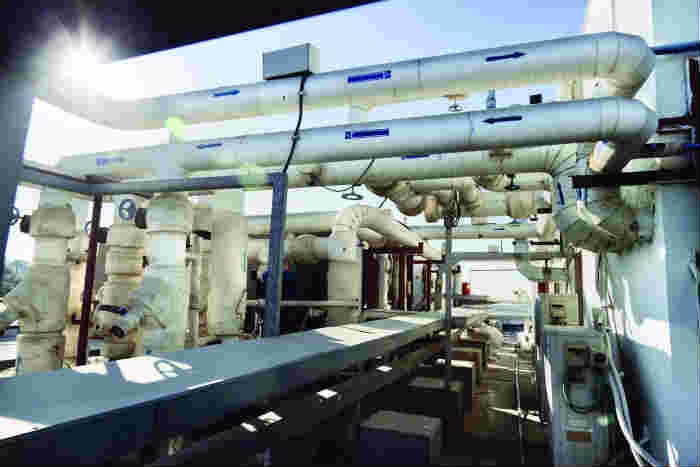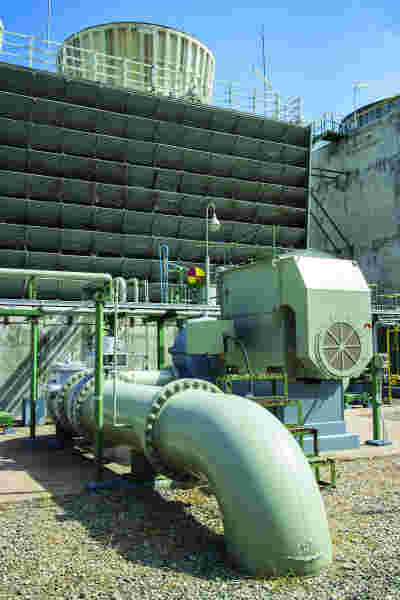Challenging the axiomatic assumption that District Cooling is always more energy efficient than conventional water-cooled technology, Dan Mizesko endeavours to prove otherwise.

Dan Mizesko is the Managing Parner at Al Shirawi US Chiller Services
I have so far discussed chiller maintenance issues, but I would like to devote this article to District Cooling versus stand-alone water-cooled systems by providing just the facts.
First and foremost, there are claims being made that District Cooling is more energy efficient than conventional water-chilled technology. This is misleading, as it compares water-cooled technology with air-cooled technology, which is neither a fair nor an appropriate comparison.
Many facilities and buildings throughout the region have stand-alone water-cooled chillers – exactly the very same kind of chillers as do District Cooling plants. Therefore, District Cooling is not any more energy efficient than stand-alone chilled water-cooled plants. In fact, there are compelling arguments that can be made to support the view that District Cooling is less efficient than a stand-alone water-cooled centrifugal plant. Here are the arguments:

Image credit: Shutterstock
The points highlighted above show that stand-alone water-cooled systems are more efficient than District Cooling systems, and that without question, a stand-alone water-cooled chilled plant will produce chilled water at a lower cost than a District Cooling plant can.
Finally, I believe that developers should have the option of placing stand-alone water-cooled systems on their developments as against hooking up to a district cooling system if that is what fits their individual needs and goals. Having this choice could bring about more energy efficiency in the region.
Here is another fact to consider: Due to the size of District Cooling plants, the providers must purchase large chillers to pack corresponding tonnage into a plant footprint. Consequently, District Cooling plants cannot purchase smaller super-efficient magnetic bearing oil-less centrifugal chillers that operate at a much lower Kw per tonne than the current centrifugal chillers being utilised by the District Cooling industry. In contrast, a stand-alone water-cooled building or plant can purchase the most efficient chillers available. This, coupled with the inherent inefficiencies associated with District Cooling, make it a clear fact that stand-alone systems are and can be much more efficient than District Cooling plants, either with the same kind of equipment installed in the stand-alone plants as the District Cooling plants or with more efficient chillers installed at the stand-alone plants versus the technology being utilised by the District Cooling industry.
One last fact: Some District Cooling companies also have sites where they utilise air-cooled chillers. Yes, the very same kind of air-cooled technology that some in the industry use in order to try to make the comparisons and claims that District Cooling is more efficient than “conventional cooling”. This is, indeed, food for thought.

Image credit: Shutterstock
In closing, District Cooling does have its benefits. In fact, my company operates, services and maintains several District Cooling plants. However, when compared with stand-alone water-cooled systems that have proper maintenance and optimisation strategies implemented, given the facts at hand, it seems that stand-alone systems
are more energy efficient. This is not to take away the benefits of District Cooling systems, but rather to engage people involved to look at the differences between the two types of systems and decide what works best for them.
Finally, I believe that developers should have the option of placing stand-alone water-cooled systems on their developments as against hooking up to a District Cooling system if that is what fits their individual needs and goals. Having this choice could bring about more energy efficiency in the region.
Dan Mizesko is the Managing Partner of Al Shirawi US Chiller Services. He can be contacted at dan@uschillerservices.com
CPI Industry accepts no liability for the views or opinions expressed in this column, or for the consequences of any actions taken on the basis of the information provided here.
Copyright © 2006-2025 - CPI Industry. All rights reserved.